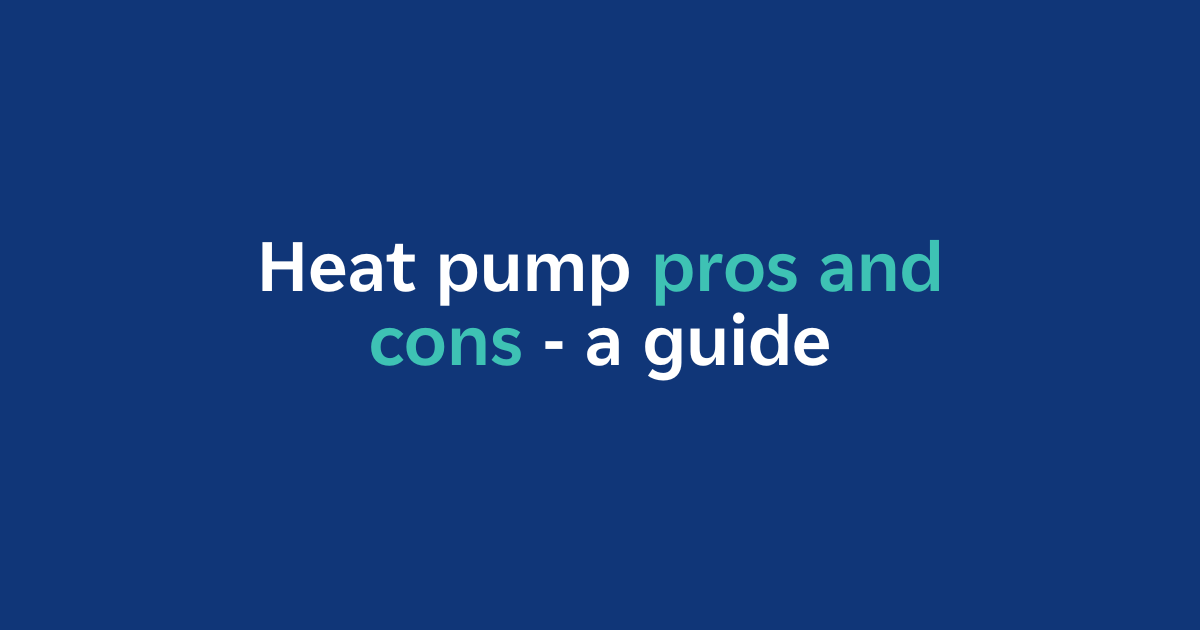Air source heat pumps: The pros, the cons, and how they work
Thinking about switching to an air source heat pump?
It’s a big step, but one that could save you money, lower your carbon footprint, and make your home more energy efficient.
The UK government is aiming for 600,000 heat pump installations every year by 2028 and with grants of £7,500 for eligible homeowners via the Boiler Upgrade Scheme, it’s no surprise more households are making the switch.
Before you decide, here’s what you need to know.
What is an air source heat pump?
Air source heat pumps (ASHPs) absorb heat from the outside air and use it to heat your home and hot water. They work on a simple idea – taking heat from the air, even in temperatures as low as -25°C and move it inside. They are super-efficient even at low outdoor temperatures, making them the perfect choice for the UK climate.
They’re three times more efficient than traditional gas boilers, producing around three units of heat for every one unit of electricity they use. That makes them 300% more efficient that your current boiler.
Air source heat pumps can also last for 20 years or more with regular servicing, and they’re generally low maintenance.
How does an air source heat pump work?
- Heat from the air is absorbed into a refrigerant fluid.
- This passes through a heat exchanger inside the pump, which increases the temperature.
- The heat is transferred to water, which flows through your radiators or underfloor heating as well as your hot water cylinder.
5 Advantages of air source heat pumps
- Grants available – The government is currently offering a grant of £7,500 towards the cost of installing an air source heat pump. This can help offset initial installation costs for eligible homeowners. These incentives make the transition to sustainable energy more accessible and affordable for a broader range of homeowners
Learn more about the Boiler Upgrade Scheme here
- Low carbon – Reduce your home’s carbon footprint by up to 44% compared to a gas boiler. Using renewable energy from the air, ASHPs help reduce greenhouse gas emissions. This means you can lower your carbon footprint.
- Highly efficient – Air source heat pumps are known for their high efficiency. For every unit of electricity used, they can produce up to three units of heat. This efficiency can significantly reduce your energy bills over time.Learn more about efficiencies here
- Versatile – Suitable for many types of homes, heat pumps provide both heating and hot water. They can also be installed in a wide variety of homes despite media comments to the contrary!
- Potential savings – You could make savings on your energy bills if you’re upgrading from an older, less efficient system. There are also savings to be had by switching to a dedicated heat pump tariff. Our colleagues at EDF have a specific tariff for heat pump owners here.
5 Disadvantages of air source heat pumps
- Installation cost – The upfront cost of buying and installing an air source heat pump can be a drawback. This initial investment may deter some homeowners despite the potential long-term savings. The cost includes the equipment, labour costs, and possible upgrades to your radiators and pipework. This can be daunting for those on a tight budget.
Learn more about heat pump costs here
- Inside space – You will also require space for a hot water cylinder inside your property. Some households no longer have this space after switching to combi gas boilers.
- Home upgrades – Some older properties may be to upgrade their pipework and radiators which can add to the cost.
Learn more about radiators here
- Aesthetics – Some homeowners think the outdoor units of air source heat pumps (ASHPs) look unattractive. This can change how their home’s outside looks.
Is your home heat pump ready?
For the best results, your home should:
- Be well insulated to keep heat in.
- Have enough outdoor space for the pump unit.
- Have space inside for a hot water cylinder
How EDF Heat Pumps can help
Once you’re ready, we’ll:
- Give you a free quote – Fill in the form here and our team will prepare a custom quote designed for you and your home.
- Survey your home – Once you decide to go ahead, we’ll do a full site survey so the can design the best system for your home
- Install your system – We’ll select a local installer near you from our dedicated installer network to install your system.
And of course, we’ll be here for ongoing support from the start of the process to the end and beyond!



